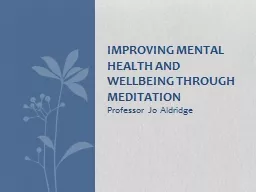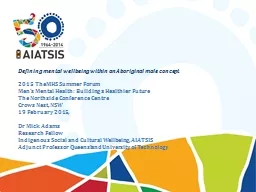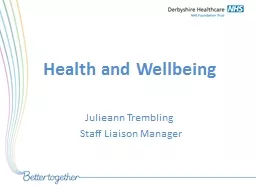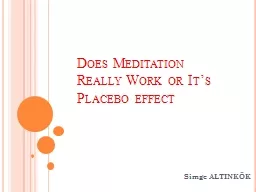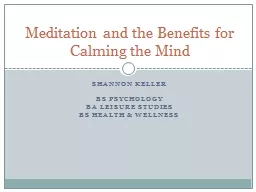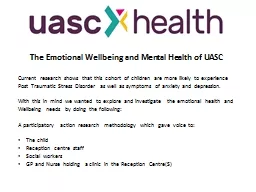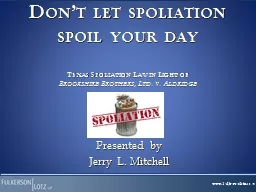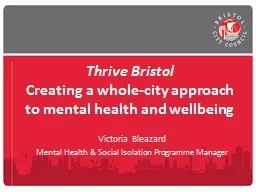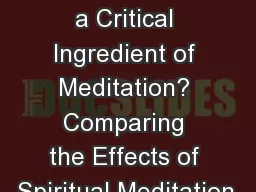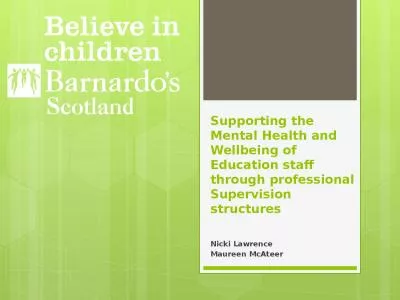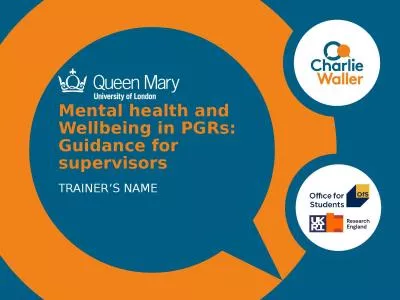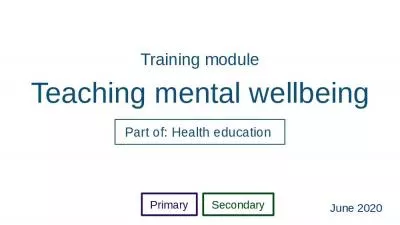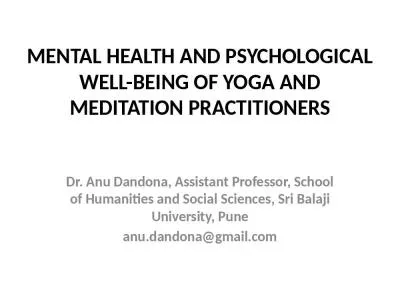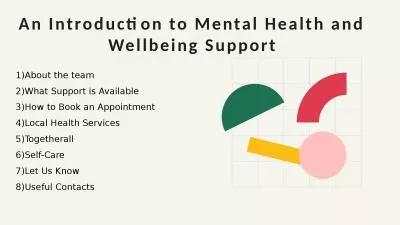PPT-Professor Jo Aldridge Improving Mental Health and Wellbeing Through Meditation
Author : missroach | Published Date : 2020-06-22
Evidence and experience This presentation based on Evidence I am an academic after all what does the scientific evidence tell us about the benefits of meditation
Presentation Embed Code
Download Presentation
Download Presentation The PPT/PDF document "Professor Jo Aldridge Improving Mental H..." is the property of its rightful owner. Permission is granted to download and print the materials on this website for personal, non-commercial use only, and to display it on your personal computer provided you do not modify the materials and that you retain all copyright notices contained in the materials. By downloading content from our website, you accept the terms of this agreement.
Professor Jo Aldridge Improving Mental Health and Wellbeing Through Meditation: Transcript
Download Rules Of Document
"Professor Jo Aldridge Improving Mental Health and Wellbeing Through Meditation"The content belongs to its owner. You may download and print it for personal use, without modification, and keep all copyright notices. By downloading, you agree to these terms.
Related Documents

